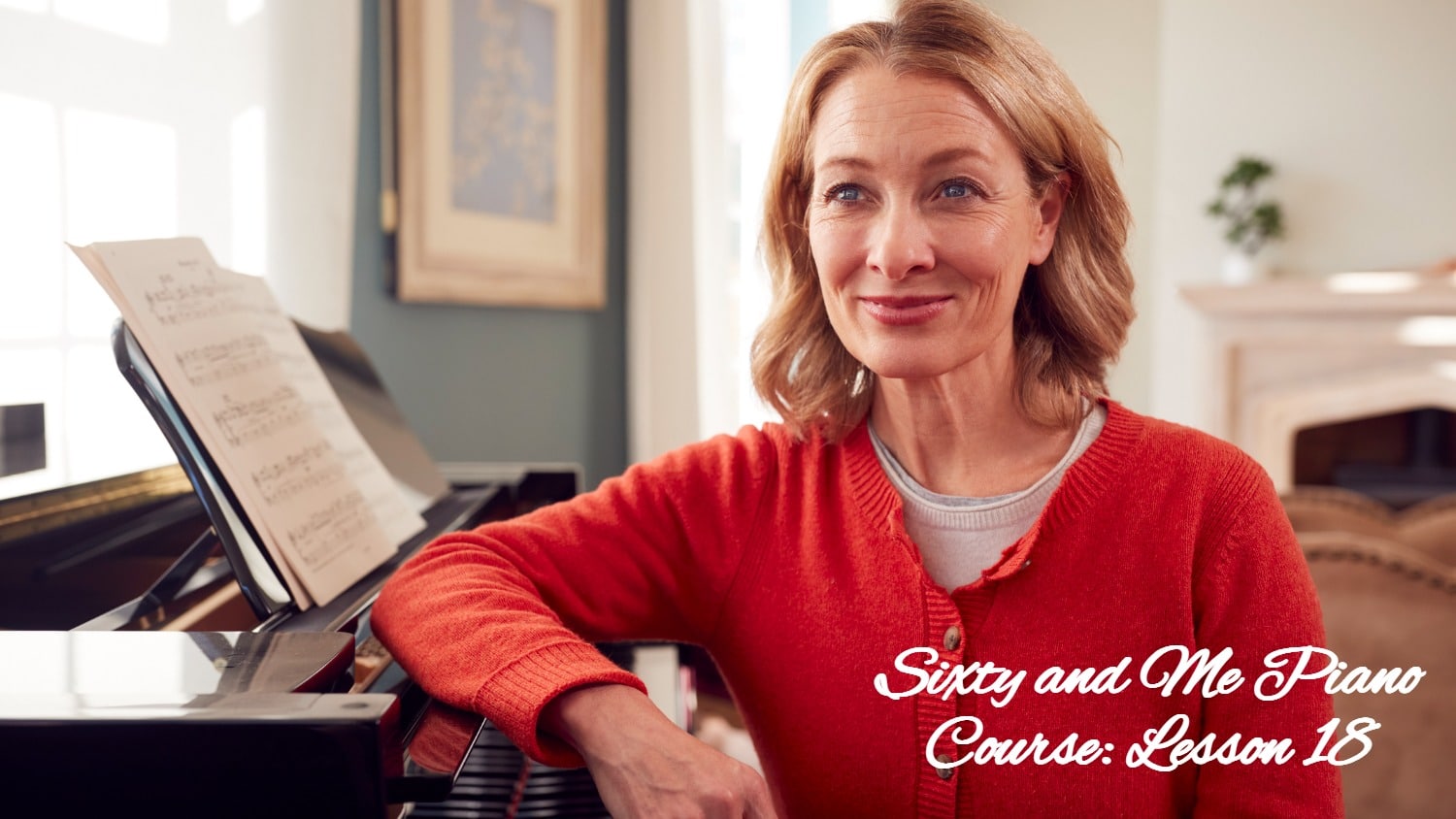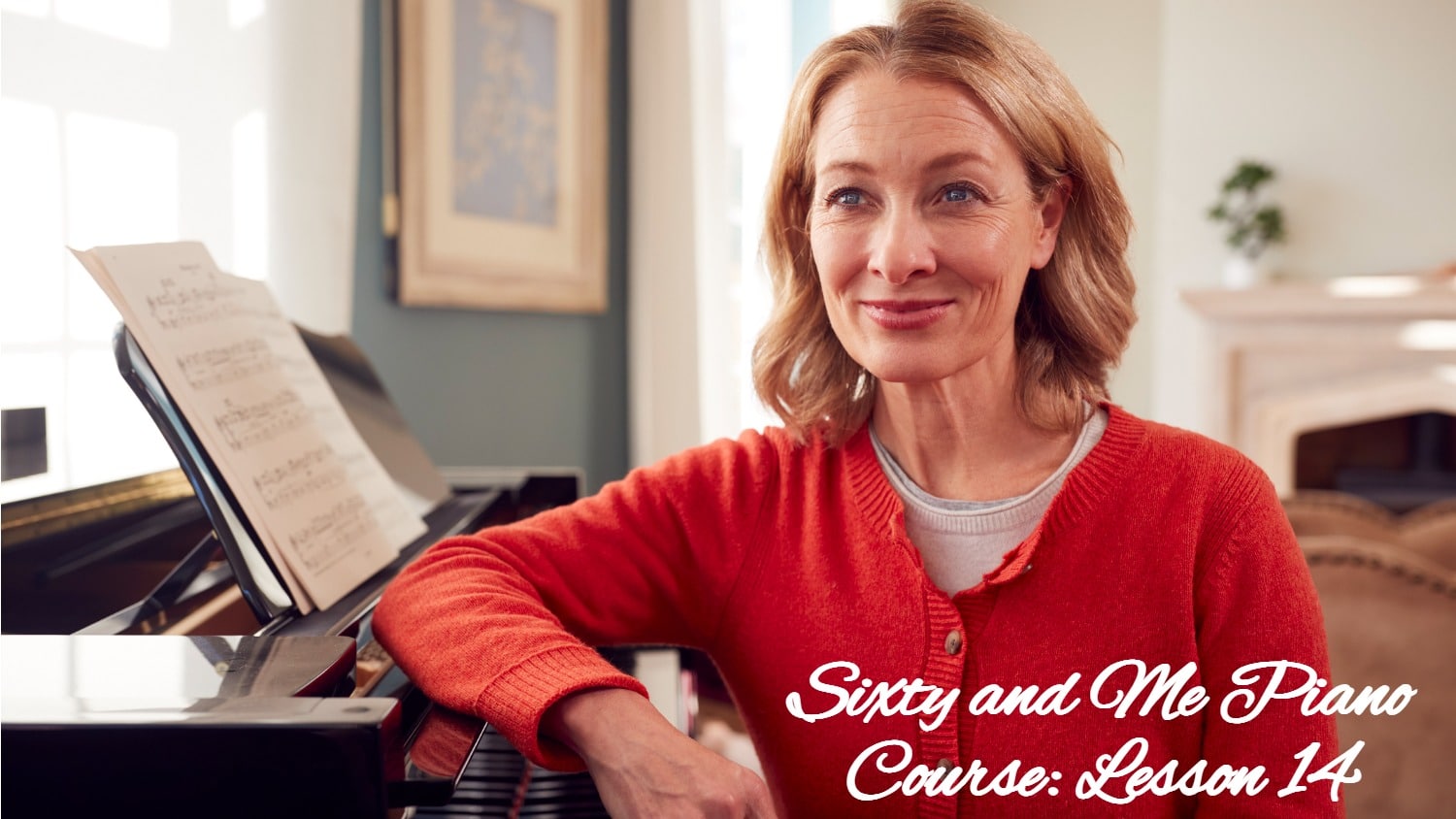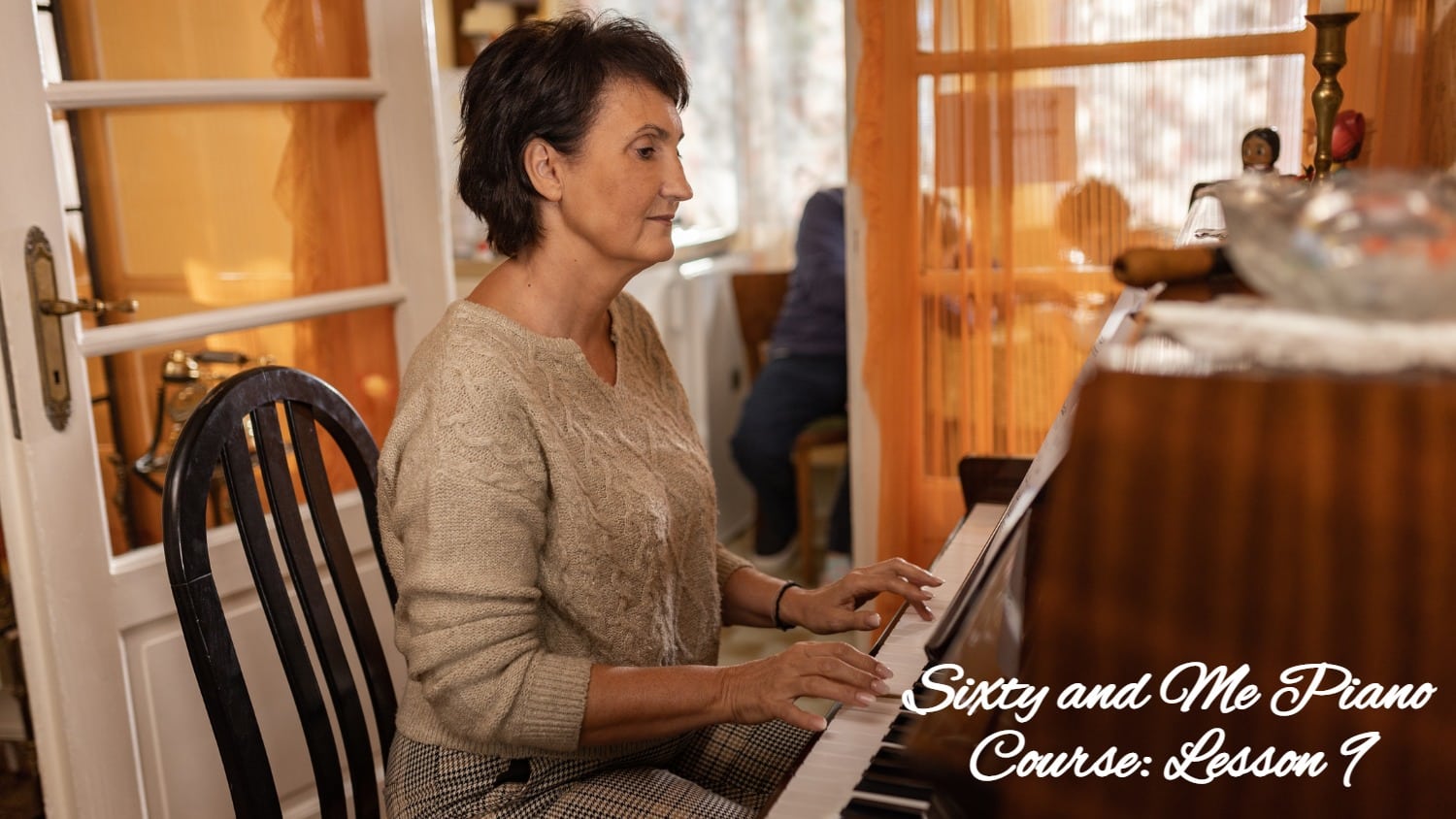
Piano Lesson 18: Touchstones and Treble A
Welcome to Lesson 18, covering pages 59-61 in our Upper Hands Piano, BOOK 1.
[NOTE: If you are just joining us for the first time, you can find my previous Sixty and Me Free Piano Lessons on my Author page. You can join our lessons any time!]
18.1 Touchstones and a New Note: Treble A, p.11 and p.59
You might remember from p.11 that the TREBLE CLEF is also called the G-CLEF because it circles around the G line in the treble clef. Similarly, the BASS CLEF is also known as the F-CLEF because the F line lies between its two dots. You can think of Treble G and Bass F as touchstones.
When you encounter a note you don’t know in the treble staff, find your G line and count up or down from G to figure out your note. If you encounter a note you don’t know in the bass staff, find your F line and count up or down from F to figure out the note. On p.59 I introduce Treble A5. This is the A above middle C. If you find your touchstone Treble G, A will be one note above it. For more about touchstones, watch my video:
18.2-18.3 London Bridge and Blow the Man Down, p.60
On p. 60 we’re playing songs that include our new note A5. Notice that your right hand is now playing 6 notes, with only 5 fingers! When we play more than 5 consecutive notes in one hand, we have to shift our fingers around a bit.
Take note of the circled fingering. When I circle a finger number it is to remind you that it’s not going to just fall under your fingers. You might have to move your hand a bit in order to get the correct finger on the indicated note. The circled fingerings alert you to be aware!
18.2 London Bridge:
18.3 Blow the Man Down
18.4 Listen to the Mockingbird, p.61
If you have time in these two weeks, play Listen to the Mockingbird. But if you don’t, just take an extra week to learn it. Mockingbird has some tricky rhythms and starts with a pick-up, so be sure to watch or listen to my video! Here is Mockingbird played slowly and faster:
https://youtu.be/x5KuTFaOGrY (slowly)
https://youtu.be/nTvSzv_6Rx4 (faster)
Passion Practice!
- Exercise #3 in E-flat (review) and B-flat (new). Play each exercise 3 times: 2x Forte (loudly) then 1x Piano (softly) with each hand. Use the PENTASCALES chart at the back of the book if you are unsure of any hand positions. Review Ex #3 in B, F#, D-flat and A-flat when you can.
- Chord Calisthenics #3 – Play the major/minor/major triads in F# and D-flat, and review E and B.
- Play London Bridge and Blow the Man Down on p.60. Once you feel comfortable with the notes and rhythm for those two songs, go on to Listen to the Mockingbird on p. 61. You might want to take an extra week for Mockingbird, or you can play it along with Lesson 19.
An Interesting Habit Building Idea
In his book Atomic Habits, author James Clear suggests that we pair something like our piano practice “habit” which might be difficult, with a light and easy pleasurable habit. For example, I love my daily cup of matcha latte which I drink about an hour after I eat breakfast.
If I make an agreement with myself that I get to have my morning matcha AFTER I have practiced my piano for 20 minutes, I will be more likely to get my practice in, and it will be sooner rather than later, because I don’t like to have caffeinated drinks after noon.
Let’s Have a Conversation:
With what positive habit might you pair your practice? A morning cuppa coffee? A meal? A bath? An afternoon walk? A favorite TV show, or movie time? I feel so great about my week when I fit my practice in at least 3-5 days. As I discussed in Video 18.1 above, how are you striking that balance between striving for consistent practice, while keeping your playing fun and relaxed?
Tags Piano Lessons







Good lesson and important practice tip! I’ve always told my guitar students to attach their practice to something they do daily—not so much as a reward, but as a way to eliminate the decision-making process regarding practice. After a few consecutive days of practicing after breakfast, you become like Pavlov’s dog, right? Breakfast and practice are paired. It’s just automatic to go to the practice room after your last bite, rather than something that requires motivation to do. It’s so helpful!